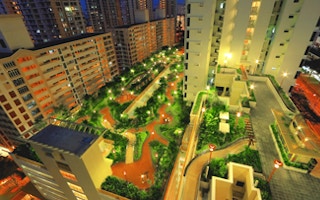Urban planners in Singapore are developing a cutting-edge technology aimed at making it easier to transform existing old towns to eco-friendly ones.
The simulation tool will help planners visualise and identify the best urban design solutions.
The technology will be used to transform Jurong East town, located in the western part of Singapore.
And if successful, the tool will be applied to other estates around the island.
The simulation provides valuable information, from which areas receive the most sunlight at different times of the day, to which buildings produce the most waste.
It is part of a new urban planning tool being developed in Singapore.
The technology allows planners to visualise the built environment of a city and execute the most suitable urban planning strategies.
The Housing and Development Board has signed a Memorandum of Understanding (MOU) with two French companies - Electricité de France (EDF) and VEOLIA Environnement Recherche et Innovation (Veolia) - to develop the technology.
Francois Grosse, senior vice-president of Digital Services at Veolia, said: “In Singapore, we will work on three main fields. First is cooling strategies, second is energy demand and third is waste collection strategies…And we will expand the scope, both geographic scope and then also the layers of problematique will be added.”
The tool is being tested on the pilot Greenprint neighbourhood in Jurong East.
One target is to achieve lower carbon emissions through the installation of solar panels on existing rooftops.
Experts said the tool is particularly useful for land-scarce Singapore.
Transforming old towns to an eco-city is also more challenging because of the existing infrastructure.
Director of the Centre of Excellence for Building Research at HDB’s Building Research Institute Teh Poh Suan said: “The good thing about this system is that it can pick and recommend the best combination of strategies for the planner to adopt.
“We do not have to do the trial and error physically, we can do it through the computer. So with that, we reduce the risk significantly of introducing something that isn’t so workable on the ground.”
It will take one year for HDB to develop the tool to the Singapore context.
And for residents who want to see just how green Jurong East can get, they can look forward to seeing models at the next Greenprint exhibition.










